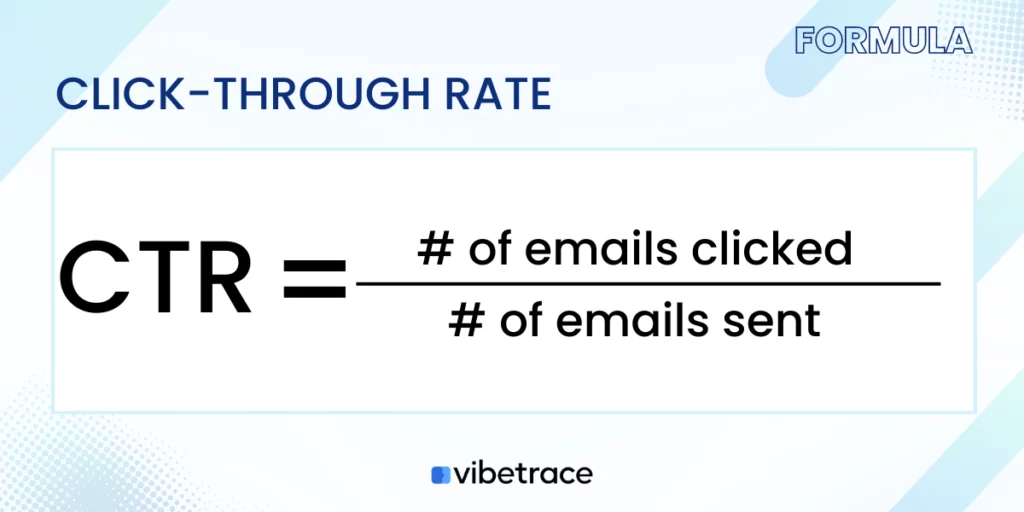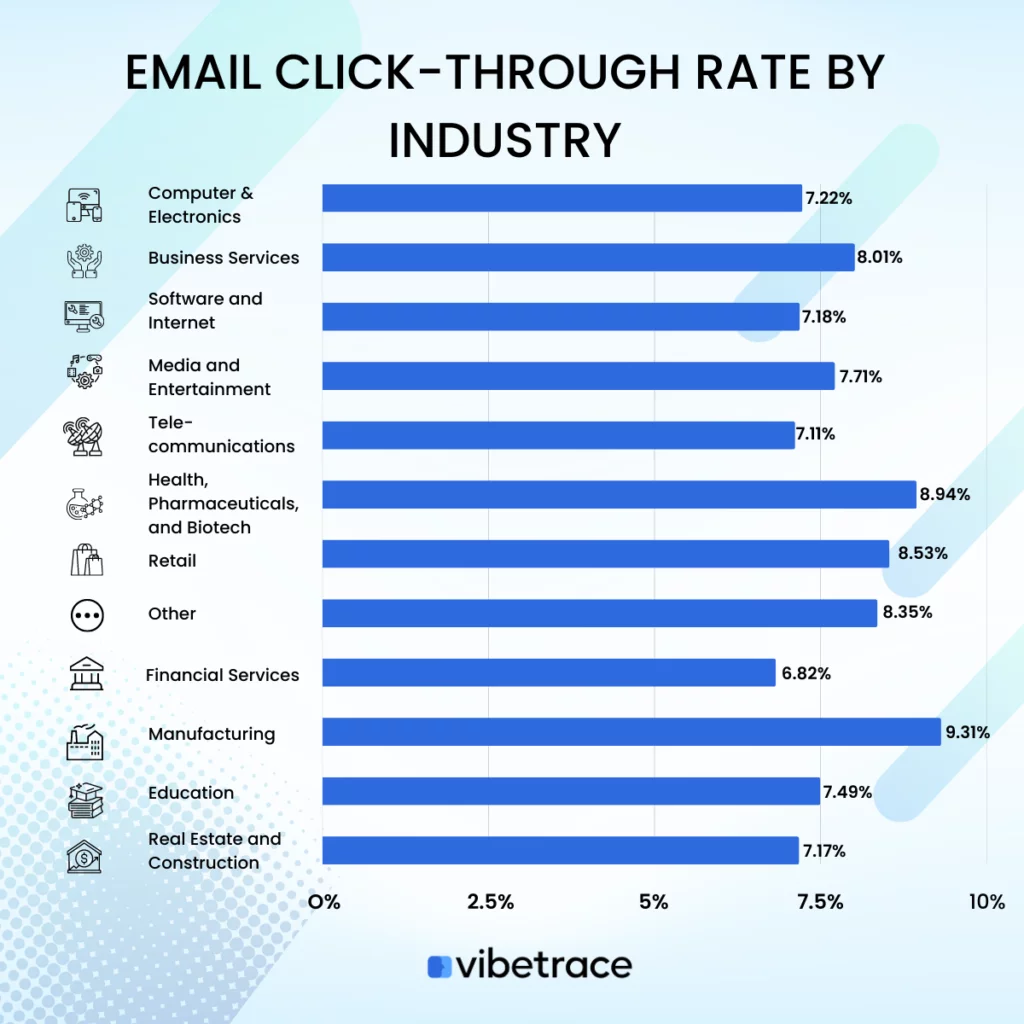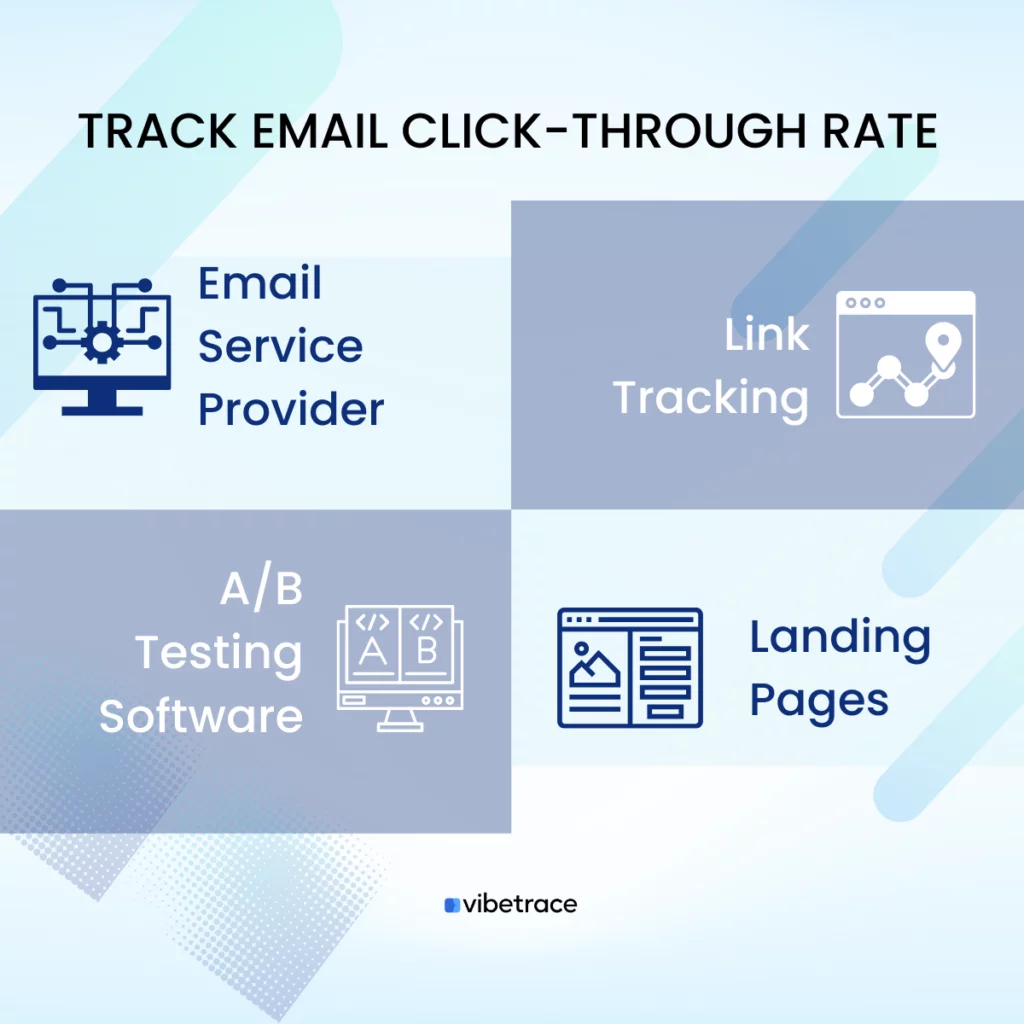Email Click-Through Rate is a key metric that identifies the engagements on your email campaigns such as clicks on hyperlinks, CTA, or even a message added to the email sent.
In reality, just having your emails opened does not ensure that they have been read by the recipient, as some individuals may repeatedly open emails without actually looking at their contents.
Your goal is to encourage recipients to read your emails and take the desired action you have specified for your email campaign.
Measuring email success will always matter when determining areas of improvement for future campaigns.
What is Email Click-Through Rate?
Definition of Email Click-Through Rate
Email Click-Through Rate (CTR) is a metric used in email marketing to measure the effectiveness of an email campaign.
It represents the percentage of recipients who clicked on one or more links in the email. CTR is calculated by dividing the number of clicks by the number of unique emails opens.
A high CTR indicates that the email content was relevant and engaging and that the call-to-action was clear and effective. A low CTR may indicate that the subject line was not enticing, the content was not relevant, or the call-to-action was not clear.
Email Click-Through Rate Formula
The formula for calculating CTR is:

Email Click-Through Rate by Industry
The following shows the average percentage of recipients who have clicked the links from your emails:

| INDUSTRY | AVERAGE |
| Computer & Electronics | 7.22% |
| Business Services | 8.01% |
| Software and Internet | 7.18% |
| Media and Entertainment | 7.71% |
| Telecommunications | 7.11% |
| Health, Pharmaceuticals, and Biotech | 8.94% |
| Retail | 8.53% |
| Other | 8.35% |
| Financial Services | 6.82% |
| Manufacturing | 9.31% |
| Education | 7.49% |
| Real Estate and Construction | 7.17% |
According to a report by Hubspot, the email click-through rate across all industries is 0.48%.
This data from Hubspot presents the average click-through rate (CTR) for different industries, which is a commonly used metric in email marketing to measure the percentage of email recipients who click on a link or call-to-action.
The average CTR for all industries is 7.8%, but this data shows that CTR can vary by industry.
The data indicates that the manufacturing industry has the highest average CTR of 9.31%, followed by health, pharmaceuticals, and biotech at 8.94%, and retail at 8.53%.
On the other hand, the financial services industry has the lowest average CTR at 6.82%.
The other industries listed fall somewhere in between, with average CTRs ranging from 7.11% for telecommunications to 8.35% for “other.”
Overall, this data suggests that the success of email marketing campaigns in terms of CTR can vary significantly depending on the industry.
You can use this data to benchmark their own performance and identify areas for improvement, especially by comparing their CTR to the average for their industry.
How to track Email Click-Through Rate?
As email marketers, you can use CTR as a key metric to evaluate the success of your email campaigns and make improvements to increase your engagement and conversion rates so tracking CTR is highly recommended.

There are several ways to track email click-through rate (CTR) in email marketing:
Email Service Provider (ESP): Most ESPs, such as Mailchimp, Constant Contact, or AWeber, have built-in tracking tools to measure email CTR. These tools will automatically track clicks on links in the email and calculate the CTR for each campaign.
Link Tracking: By using unique links for each email campaign, you can track the number of clicks and calculate CTR. There are many link-tracking tools available, such as Google Analytics, Bitly, or UTM tracking codes, that can be used to track clicks.
A/B Testing: By sending two versions of an email with different subject lines or content, you can compare the CTR of each version and determine which version is more effective.
Landing Pages: By using unique landing pages for each email campaign, you can track the number of visitors to the page and compare it to the number of clicks in the email to calculate CTR.
Regardless of the method used, it’s important to regularly track CTR to understand the effectiveness of your email campaigns and make adjustments to improve performance.
How often should you check Email Click-Through Rate?
The frequency at which you check your email click-through rate (CTR) can depend on several factors, including the goals of your email campaigns and the volume of emails you are sending.
Here are some guidelines for how often you might want to check your CTR. Especially for automation flows, when you made changes to the campaigns (subject lines or content) you will need to check more often.
Important:
- check email click-through rate per campaign and see evolution over time
- it click-through rate decreases over time you might need to take action.
Daily or Weekly: If you are sending a large number of emails on a regular basis, it may be useful to check your CTR on a daily or weekly basis. This will allow you to make any necessary adjustments to your email strategy in a timely manner.
Several times a week: If you are running a targeted email campaign with a specific goal in mind, you may want to check your CTR more frequently, such as after every email blast, or several times per week, to see if you are making progress towards your goal.
Monthly: For email campaigns that are part of a larger, long-term strategy, checking your CTR on a monthly or quarterly basis may be sufficient. This allows you to see the bigger picture and make any necessary changes to your email strategy over time.
Email Click-Through Rate Optimization
Optimizing email click-through rate (CTR) involves making changes to your email campaigns to increase the number of clicks on links in the email. Here are some tips for optimizing your email CTR:
Segment your email list: By dividing your email list into smaller groups based on subscriber behavior, interests, or demographics, you can send targeted and relevant emails that will result in higher CTR.
Write compelling subject lines: Your subject line is the first thing that subscribers see, so it’s important to write a subject line that entices subscribers to open the email. Keep it short and to the point, and use action-oriented language.
Make it visually appealing: Use images and videos to make your email more visually appealing. Be sure to optimize the images for email and use HTML and CSS to create an attractive layout.
Use personalization: Personalized emails have a higher CTR than generic emails. Use subscriber data to personalize the email, such as their name, location, or purchase history.
Test and optimize: Regularly test different elements of your email campaigns, such as subject lines, layouts, and call-to-action buttons, to see what works best. Use A/B testing to determine the most effective changes.
Keep it short and to the point: Long emails can be overwhelming for subscribers. Keep your emails short and to the point, with a clear call-to-action and a single goal.
Optimize your landing pages: Make sure that your landing pages are optimized for conversions, with clear calls-to-action and a streamlined design.
By following these tips, you can optimize your email CTR and improve the effectiveness of your email campaigns.
Email Click-Through Rate Calculator
Do you want to calculate your click-through rate? Use our simple calculator below.
Simple Email Click Rate Calculator
Important Things about Email Click-Through Rate
Here are some important things to keep in mind when considering email click-through rate (CTR):
CTR is a key metric for measuring the success of your email campaigns: CTR measures the number of clicks on links within your email compared to the number of emails sent. A high CTR indicates that your email content is relevant and engaging to your subscribers.
CTR varies by industry and type of email: CTR can vary greatly based on the industry and type of email. For example, a newsletter may have a lower CTR compared to a promotional email.
CTR can be influenced by subject line, sender name, and email design: Factors such as the subject line, sender name, and email design can have a significant impact on CTR. You should aim to create compelling subject lines, use a recognizable sender name, and design visually appealing emails to maximize CTR.
Segmentation can improve CTR: By segmenting your email list based on subscriber behavior, you can send targeted emails that are more relevant to each group. This can result in higher CTR.
CTR is only one part of the equation: While CTR is an important metric, it is only one part of the equation. You should also consider open rate, conversion rate, and other metrics to get a full picture of the success of your email campaigns.
In conclusion, email CTR is a crucial metric for measuring the success of your email campaigns and should be considered alongside other metrics to get a comprehensive view of your email performance.
Metrics related to Email Click-Through Rate
Along with email click-through rate (CTR), other metrics that should be considered to get a comprehensive view of the success of your email campaigns include:
Spam Complaint Rate
The number of recipients who marked the email as spam, divided by the number of emails delivered.
List Growth Rate
Forward Rate
The percentage of recipients who forward your email to others.
Vibetrace offers an email marketing system and easy integration with any eCommerce store, which could easily track the email click-through rate of any campaign.
Vibetrace can track clicks on the links included in your emails, allowing you to see which links are getting the most engagement and adjust your email strategy accordingly.
It can also track the number of opens your emails receive, giving you a more complete picture of how well your email campaigns are performing.
Lastly, you can use Vibetrace’s A/B testing features to compare different versions of your emails and determine which elements (e.g., subject lines, call-to-action buttons, etc.) are most effective in driving clicks.
By using Vibetrace’s email marketing system, you can track your CTR and use the insights you gain to improve your email campaigns and drive more engagement from your subscribers.
Sign up for our email list today and unlock the full potential of your campaigns with our cutting-edge email marketing automation platform.

